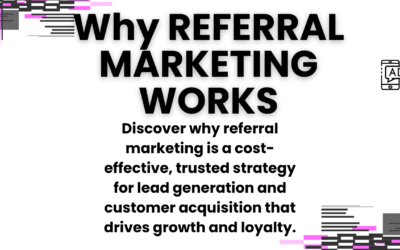Ever wonder why some blog posts go viral?
While others barely get noticed?
It’s not just about facts—it’s about emotions.
Stories are 22 times more memorable than facts alone, according to a study by Stanford University.
When you share a story, you don’t just convey information—you create a connection.
Emotions drive decisions.
And stories are the fastest way to stir those emotions.
In this lesson, you’ll learn how to harness the power of storytelling so that you get more leads, profits and wealth.
As you use stories in your blog posts, emails, articles you will:
- Captivate your audience making it easy to tell them about your products,
- Build trust so that they clearly see they are the solutions to their problems,
- and inspire action so that they buy the products and even promote them to friends and family.
Think this is impossible?
It is not.
My First Attempt at Storytelling
When I started writing, my blogs were fact-heavy and precise.
They were like those long scientific thesis that are presented by nerds in scientific symposiums.
In the blog posts, I provided all the right answers, yet something was missing.
Readers weren’t engaging or sharing my content.
Then, by sheer accident, I wrote a blog post sharing my personal struggle with SEO failures.
In the post, I described the
• Frustration,
• Trial and error,
• And the moment I finally found a breakthrough.
The response was overwhelming.
Readers flooded my inbox. Many sharing how much they related to my journey.
That post taught me a valuable lesson: people connect with people, not just data.
Since then, storytelling has been at the core of everything I write.
and my engagement has never been higher.
How to Evoke Emotions Through Storytelling
1. Understand Your Audience’s Emotions
To tell a compelling story, you must know your audience’s
• Fears,
• Desires,
• And struggles.
Ask Yourself:
• What keeps them up at night? (Fear of failure?)
• What inspires them to act? (The dream of financial freedom?)
Example:
If your readers are frustrated with low website traffic, share a relatable story about the time you hit rock bottom but found a way to turn things around.
2. Follow a Storytelling Framework
Great stories have structure.
(I will share with you the structure in a little while).
Want proof?
Go read tops sellers like
• Think and Grow Rich by Napoleon Hill,
• Rich Dad Poor Dad by Robert Kiyosaki,
• How to Win Friends and Influence people By Dale Carnegie,
• And many more.
You’ll discover these books follow a particular storytelling framework.
All these books use the classic “Hero’s Journey” to guide your storytelling.
Hero’s Journey Framework:
• Setup: Introduce the hero (you or someone else) and their problem.
• Conflict: Describe the struggle or obstacles they faced.
• Resolution: Show how they overcame the challenge and achieved success.
Example:
“I spent months writing blog posts that no one read. Then, I discovered a simple SEO strategy that changed everything. Within weeks, my traffic doubled.”
3. Use Relatable Characters and Scenarios
Your readers need to see themselves in your story.
Tips for Relatability:
• Use “I” or “we” to create intimacy.
• Highlight common struggles your audience faces.
• Avoid technical jargon—keep it conversational.
Example:
“I was like you—checking my analytics daily and feeling frustrated by the lack of progress.”
4. Incorporate Sensory Details
Bring your story to life by appealing to the senses.
How to Use Sensory Details:
• Describe how something looked, felt, or sounded.
• Use metaphors and analogies to paint vivid pictures.
Example:
“I stared at my analytics screen—blank numbers, no growth. It felt like shouting into an empty void.”
5. Create an Emotional Arc
Take your audience on an emotional journey:
• Start with frustration or struggle.
• Build tension with challenges.
• End with a satisfying resolution.
Example:
“For months, I worked tirelessly, but nothing worked. Then, one day, I implemented a small change—and my traffic tripled. The relief was incredible.”
6. End with a Lesson or Call to Action
Every great story has a takeaway.
Tie your story back to your audience’s pain points.
After that, invite them to take the next step.
Example:
“Just like I discovered my path to SEO success, you can too. Start with the lessons I’ve shared here and watch your website grow.”
From Storytelling to Action
Now that you know how to use storytelling to evoke emotions, it’s time to combine this skill with action-oriented writing.
In Lesson 21, we’ll dive into “How to Write Calls-to-Action That Convert.”
Get ready to turn your emotional connections into measurable results.
Write Stories That Transform Your Audience
- Stories inspire.
- They connect.
- And they sell.
But your next step is turning those emotional connections into clear, actionable outcomes.
Don’t miss Lesson 21: How to Write Calls-to-Action That Convert.
Here’s what you’ll learn:
- The psychology behind effective CTAs.
- Proven templates for crafting irresistible offers.
- How to guide your audience seamlessly from reading to taking action.
👉 Read Lesson 21 Now! and start transforming emotions into conversions!




0 Comments